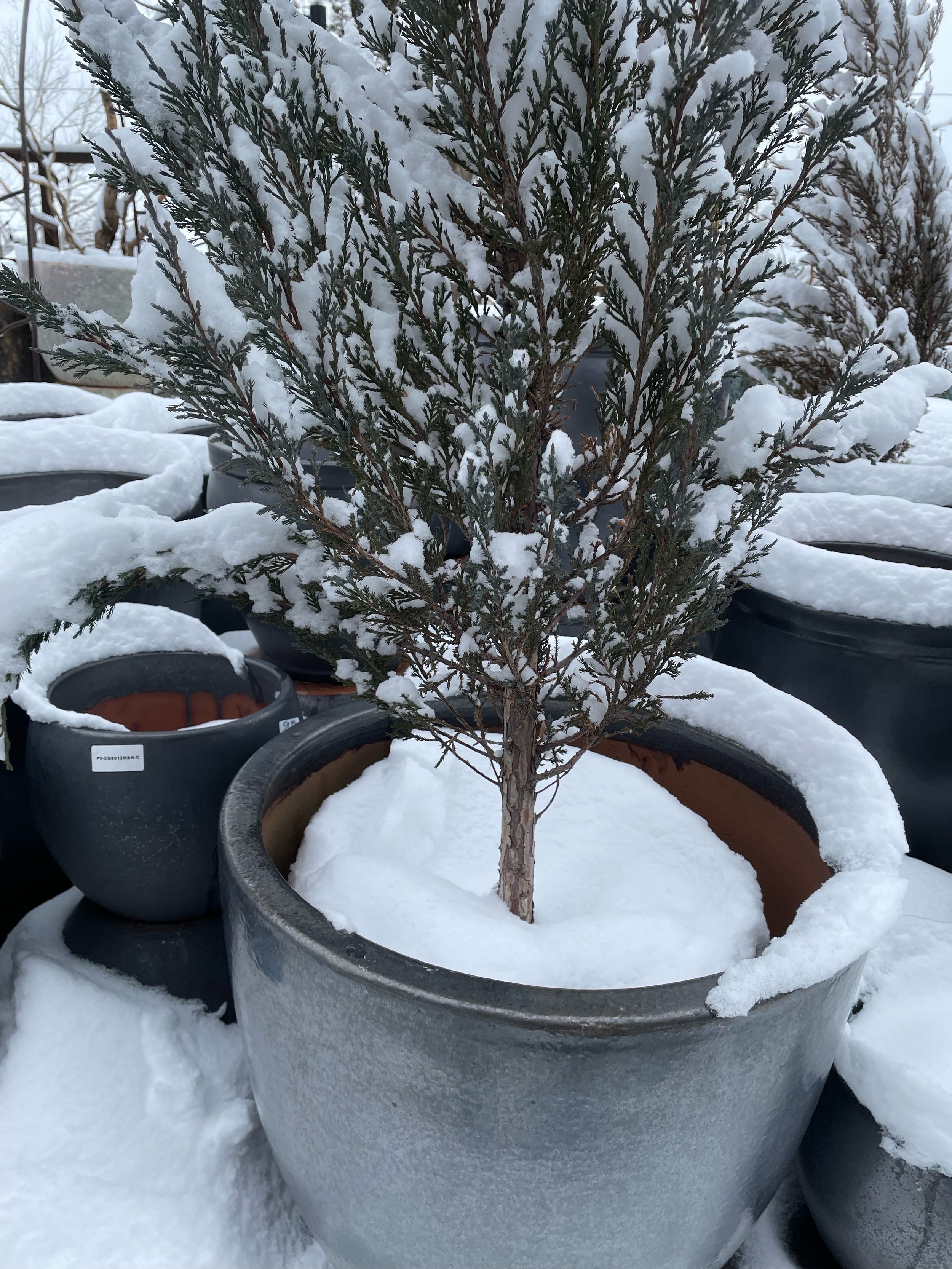Winterizing your Pottery
“Winterizing your pottery” by Robin Snyder
Pottery House maintains our ‘frost-proof ‘ pottery outside year round at our Tumalo pottery yard and retail location
Here in Central Oregon, outside recreation and socializing space is a must. Making your space beautiful is part of what Pottery House does with our brilliant ceramic pottery.
Our Central Oregon weather can range from 60 degrees and sunny, to -20 degrees and a ‘white out’, all in the same day! When winter comes, you will want to do be ready to ensure success for your pots, and the plants inside them.
For this article we will focus on using high temperature fired, frost-proof ceramic pottery. If you use some of the measures outlined below, your pottery will survive all Central Oregon weather has to offer.
Elemental Impacts: Heat, Cold, Rain, Wind Snow and Ice
All these elements: heat, cold and moisture ( in all its forms), can cause expansion or contraction in ceramics. You can help your ceramic pottery weather these extremes by using frost proof pots, creating drainage, allowing air circulation, and storing properly.
Start with the right pottery for the Job!
Not all pottery is equal! At Pottery House, we specialize in frost-proof , ‘high-temperature fired’ outdoor pottery. After almost 20 years in the industry, we know how to find and stock the toughest pots on the block. Knowing your pottery has started with the right clay and made the rough journey to get here unscathed, should tell you something about its durability.
What makes pottery ‘frost-proof’ you ask? Ceramics that have been fired at very high temperatures (2000 plus degrees Fahrenheit) and with the correct clays are not as vulnerable to cracking with cold and moisture. This is because the high silica clay used in making them melds into a solid or vitrifies at very high temperatures and creates ceramics that do not absorb water. Pottery that absorbs water will crack when temperatures are below freezing.
Drainage
Drainage is the single most important winterizing task. Elevate your frost-proof pottery to ensure water inside the pot drains out. You can do this with some sort of riser (rubber spacers, ceramic pot feet, pavers, metal, or wood stands are good options) or add a 2–3-inch gravel base underneath the pot. In addition, it is important to ensure that the interior pot drainage holes are left clear of any blockage and water flows out freely.
The risers ensure pots do not freeze to the ground. This can help if your ground surface gets soggy then freezes. Since most plants in pots need water through the winter, this is a very important component of winterizing pots with planted vegetation. Ceramic saucers should be removed from pots for the winter to allow free drainage, or one might find the saucer frozen to the pot and all drainage blocked.
Air Circulation
With the drainage hole clear, and with pots elevated, water can drain when temps are warmer leaving enough air for circulation inside, under and around the pot. This can also help cool the pot in heat extremes and protect plants in cold weather.
Proper Storage
As air temperature dips, water turns to ice. If water cannot drain, ice forms and expands puting pressure on ceramic pots. If pots are stored empty and free to drain of water, snow and ice, there is little concern. If pots are filled with live plant matter, or they are too large to move, drainage must be ensured.
It is possible to protect your pottery from being damaged by following the suggestions mentioned above. You can keep your frost-proof pottery outdoors in our Central Oregon climate with thoughtful placement and attention to a few important factors.
https://digitalfire.com/glossary/vitrification
https://digitalfire.com/article/outdoor+weather+resistant+ceramics



